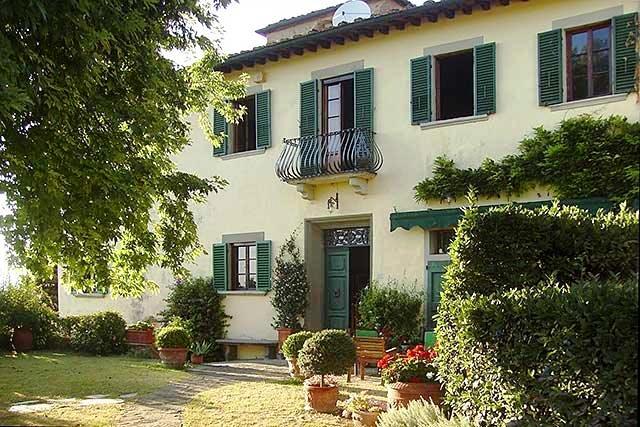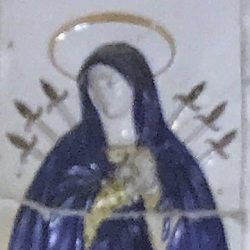The Citerna farm has a history dating back to the 15th century. Most of the old history has been found by our good neighbors at Il Paluffo Bed & Breakfast (Citerna di Sopra). We hope to be able to complete the history of La Citerna but need to take a look at the Italian before we start reading the church books …
The area Citerna has been associated with Lucardo from the 11-1200s and the castle and the church “San Donato” which is located on the ridge on the main road and a few hundred meters west (opposite Fiano). The area is divided into Citerna di Sopra and Citerna di Sotto (upper and lower Citerna). The oldest operating buildings and adjoining living quarters for the farm’s seasonal workers, as well as the home for the owner family, constitute Citerna di Sopra and from the beginning of the 1900s was called Il Paluffo. Villa La Citerna with adjacent farm houses, along with some farm buildings, became Citerna di Sotto. It is somewhat unclear whether Villa La Citerna was initially the main house of Citerna and that Citerna was split into family branches around 1900 – or not.
Villa La Citerna with adjoining farm houses, along with a few farm buildings, became Citerna di Sotto. The main buildings and living quarters for the farm’s seasonal workers, was called Citerna di Sopra and became Il Paluffo named after a landowner in the 17 century- Girolmo Paluffi . The properties were divided into two family branches in the early 1900s..
The oldest part of Paluffo is said to be the olive mill cited in documents from Repubblica Fiorentina from 1427. At that time the mills and houses in the Citerna area belonged to the powerful Florentine families Serragli and Bencini-Baldesi, both involved in trade and banking. In 1427, the Citerna area was known for producing oil, wine, saffron, pork, flax, wheat, and of course spelled, also known as tinkel wheat, or in Italian farro – which are species of wheat from 5000 BC
The main buildings of Citerna were built in the 17th century.Later, the main house of Citerna di Sopra was renovated with frescoes of rural landscapes and grotesque, and the same was also done in Villa La Citerna in the 18th century.
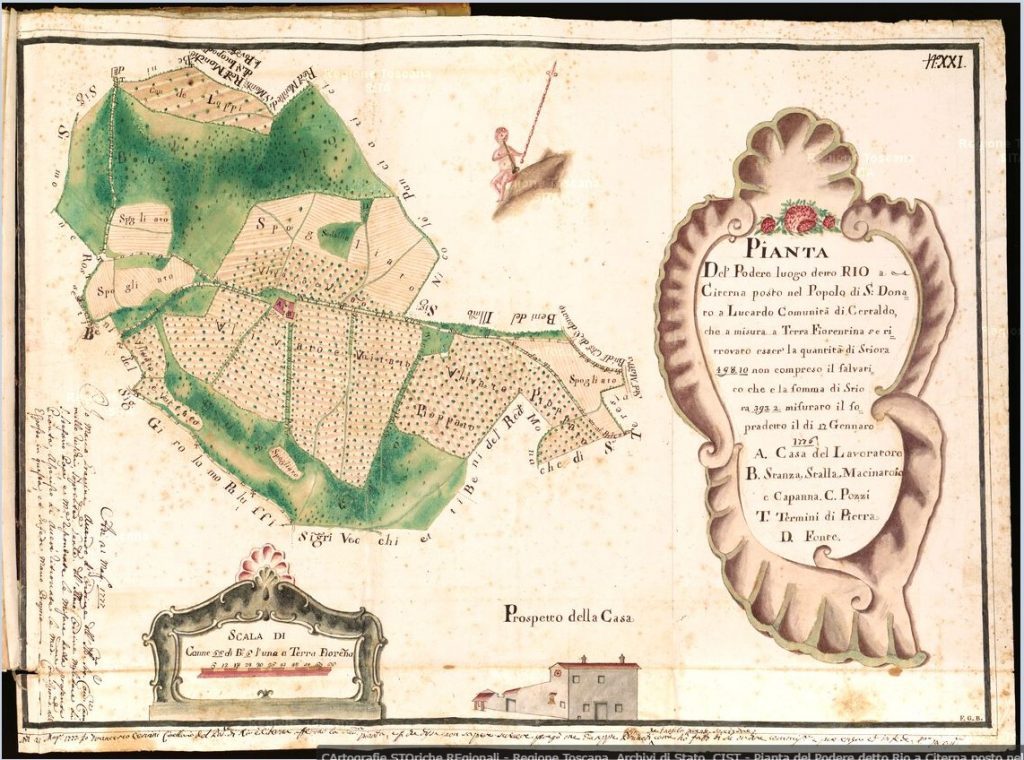
Villa La Citerna was divided into two apartments in the 1970s for rent. The Citerna di Sotto was further divided around 1990. The two farm buildings at the rear of the property were sold out and converted into a holiday property. In 1994, Villa La Citerna was sold to the Englishman John Stevens, who restored, renewed and reverted most of the changes made in the 1970s. In addition, the swimming pool was built up. Some of the frescoes were restored, but there will still be some left over under a coat of paint. At the same time, the adjoining farmhouse was divided into two apartments – and sold out. The main apartment was purchased by our good neighbor Flavio Moscon, a retired schoolteacher who now runs as a wine and olive farmer on a hobby basis.
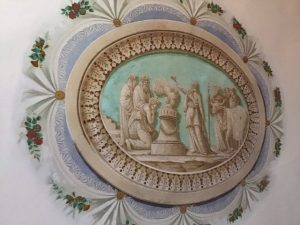
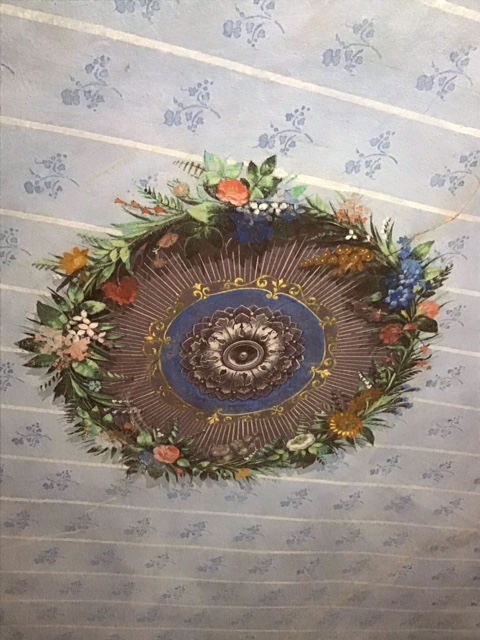
.
Our family took over Villa La Citerna in March 2016. We have further improved the property. So far we have built the new terrace at the back of the villa as well as restored roofs of the storehouse and poolhouse. The pool has been restored and improvements have been made to the pool area. So we hope that Villa La Citerna can be a place both we and you can enjoy.
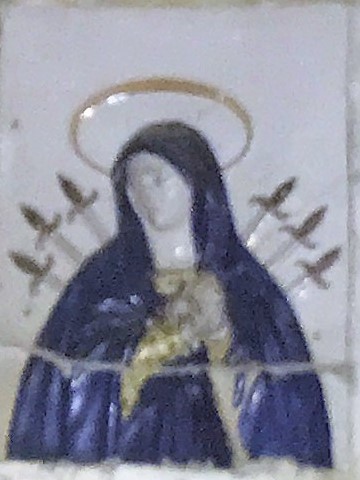
The Madonna icon that we use on these pages was accidentally found based on tips from neighbors. It is built into the wall between the pool area and the road. It may have stood there since the 17-18 century and symbolizes Marias Seven Pains
As we find futher sources of Villa La Citerna and the area and Lucardo we put up links here in anticipation of getting the better historical picture and context.
